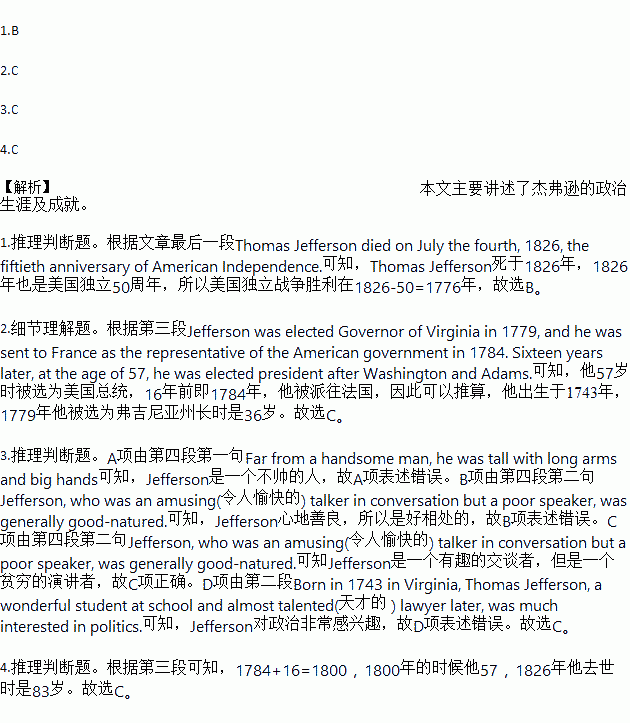题目内容
As we all know, it was Thomas Jefferson who wrote the Declaration of the Independence. He wrote it in two weeks, and after a few changes, it was accepted by the Congress. As a result, he became famous.
Born in Virginia, Thomas Jefferson, a brilliant student at school and almost talented lawyer later, was much interested in politics.
Jefferson was elected Governor of Virginia in 1779, and he was sent to France as the representative of the American government in 1784. Sixteen years later, at the age of 57, he was elected president after Washington and Adams.
Far from a handsome man, he was tall with long arms and big hands. Jefferson, who was an amusing talker in conversation but a poor speaker, was generally good-natured.
Jefferson was regarded as a defender of freedom on America. As a president, he protected the right of free speech. Interestingly enough, in his eight years as President, Jefferson never vetoed a bill which Congress had passed. He did a lot in organizing the new University of Virginia.
Thomas Jefferson died on July the fourth, 1826, the 50th anniversary of American Independence.
1.From the passage we can infer that America won its independence in ________.
A. 1786 B. 1776
C. 1842 D. 1800
2.How old was Thomas Jefferson when he became Governor of Virginia?
A. He was 26. B. He was in his forties.
C. He was 36. D. We don’t know.
3.Which of the following statements is true?
A. Jefferson was not only very talented but also very handsome.
B. Jefferson was not an easy person to get along with.
C. Jefferson was an amusing talker, but not good at speaking in public.
D. Not being politically-minded, Jefferson never vetoed a bill passed by the Congress.
4.Jefferson died when he was ________.
A. 72 B. 73
C. 83 D. 92

